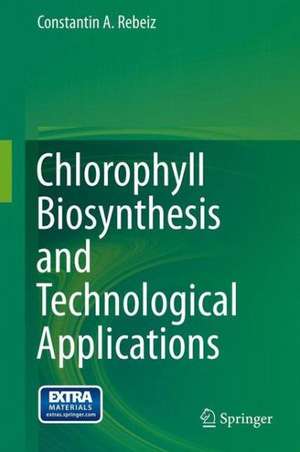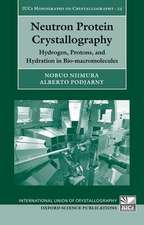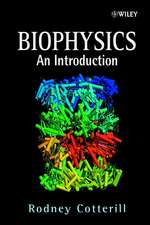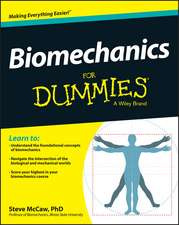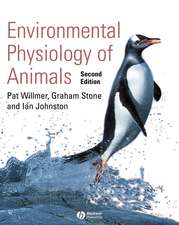Chlorophyll Biosynthesis and Technological Applications
Autor Constantin A. Rebeizen Limba Engleză Hardback – 12 noi 2013
| Toate formatele și edițiile | Preț | Express |
|---|---|---|
| Paperback (1) | 798.81 lei 38-44 zile | |
| SPRINGER NETHERLANDS – 30 apr 2017 | 798.81 lei 38-44 zile | |
| Hardback (1) | 960.42 lei 6-8 săpt. | |
| SPRINGER NETHERLANDS – 12 noi 2013 | 960.42 lei 6-8 săpt. |
Preț: 960.42 lei
Preț vechi: 1171.25 lei
-18% Nou
Puncte Express: 1441
Preț estimativ în valută:
183.83€ • 199.75$ • 154.52£
183.83€ • 199.75$ • 154.52£
Carte tipărită la comandă
Livrare economică 21 aprilie-05 mai
Preluare comenzi: 021 569.72.76
Specificații
ISBN-13: 9789400771338
ISBN-10: 9400771339
Pagini: 500
Ilustrații: XXXIV, 469 p. 131 illus., 56 illus. in color.
Dimensiuni: 155 x 235 x 27 mm
Greutate: 0.88 kg
Ediția:2014
Editura: SPRINGER NETHERLANDS
Colecția Springer
Locul publicării:Dordrecht, Netherlands
ISBN-10: 9400771339
Pagini: 500
Ilustrații: XXXIV, 469 p. 131 illus., 56 illus. in color.
Dimensiuni: 155 x 235 x 27 mm
Greutate: 0.88 kg
Ediția:2014
Editura: SPRINGER NETHERLANDS
Colecția Springer
Locul publicării:Dordrecht, Netherlands
Public țintă
Upper undergraduateCuprins
Dedication.- Preface.- Author Biography.- 1. Some Major Steps in the Understanding of the Chemistry and Biochemistry of Chl.- 2. Synopsis.- 3. Development of Analytical and Preparatory Techniques.- 4. Development of Cell-free Systems.- 5. Reactions between δ-Aminolevulinic Acid and Protoporphyrin IX.- 6. The Iron and Magnesium Branches of the Porphyrin Biosynthetic Pathway.- 7. The Chl a Carboxylic Biosynthetic Routes: Reactions between Mg-Protoporphyrin IX and Protochlorophyllide a.- 8. The Chl a Carboxylic Biosynthetic Routes: Protochlorophyllide a.- 9. The Chl a Carboxylic Biosynthetic Routes: (Photo)Conversion of Protochlorophyllides (Pchlides) a to Chlorophyllide (Chlide) a.- 10. The Chl a Carboxylic Biosynthetic Routes: Conversion of Chlide a to Chl a.- 11. The Fully Esterified Chlorophyll a Biosynthetic Routes: Reactions between Mg-Protoporphyrin IX Diester and Chl a.- 12. The Chlorophyll b Biosynthetic Pathway: Novel Metabolic Intermediates.- 13. The Chl b Biosynthetic Pathway: Intermediary Metabolism.- 14. Relationship of Chlorophyll Biosynthetic heterogeneity to the Greening Group affiliation of Plants.- 15. Relationship of Chlorophyll biosynthesis to the Assembly of Chlorophyll-Protein Complexes.- 16. The Chlorophyll Biosynthetic Heterogeneity and Chloroplast Bioengeneering.- 17. Photodynamic Herbicides.- 18. Photodynamic Insecticides.- 19. ALA-Dependent Cancericides.- Appendix I. Sequenced Chlorophyll Biosynthetic Enzymes.- Appendix II. Sequenced Apoproteins of the Chloroplast Pigment-Protein Complexes.
Textul de pe ultima copertă
This book provides an essential summary of an exciting decade of research on relationships between lipids and photosynthesis. This book, designed both for scientists whose work focuses on photosynthesis and lipids and for graduate students who are developing an interest in the field, brings together extensively cross-referenced and peer-reviewed chapters by 52 prominent researchers, from 9 countries. The topics covered include the structure, molecular organization and biosynthesis of fatty acids, glycerolipids and non-glycerolipids in plants, mosses, lichens, algae, and cyanobacteria, as well as in chloroplasts and mitochondria. Several chapters deal with the manipulation of the extent of unsaturation of fatty acids and the effects of such manipulation on photosynthesis and responses to various forms of stress. The final chapters focus on lipid trafficking, signaling and advanced analytical techniques. Ten years ago, Paul André Siegenthaler and Norio Murata had edited "Lipids in Photosynthesis: Structure, Function and Genetics," which has been a unique and an authoritative book in the field. The current new volume belongs, beside its predecessor, on every plant and microbiological researcher's bookcase.
Caracteristici
Covers plant physiology, biochemistry, biophysics, molecular biology Contains two appendices of about 4.000 pages of molecular biology searches
